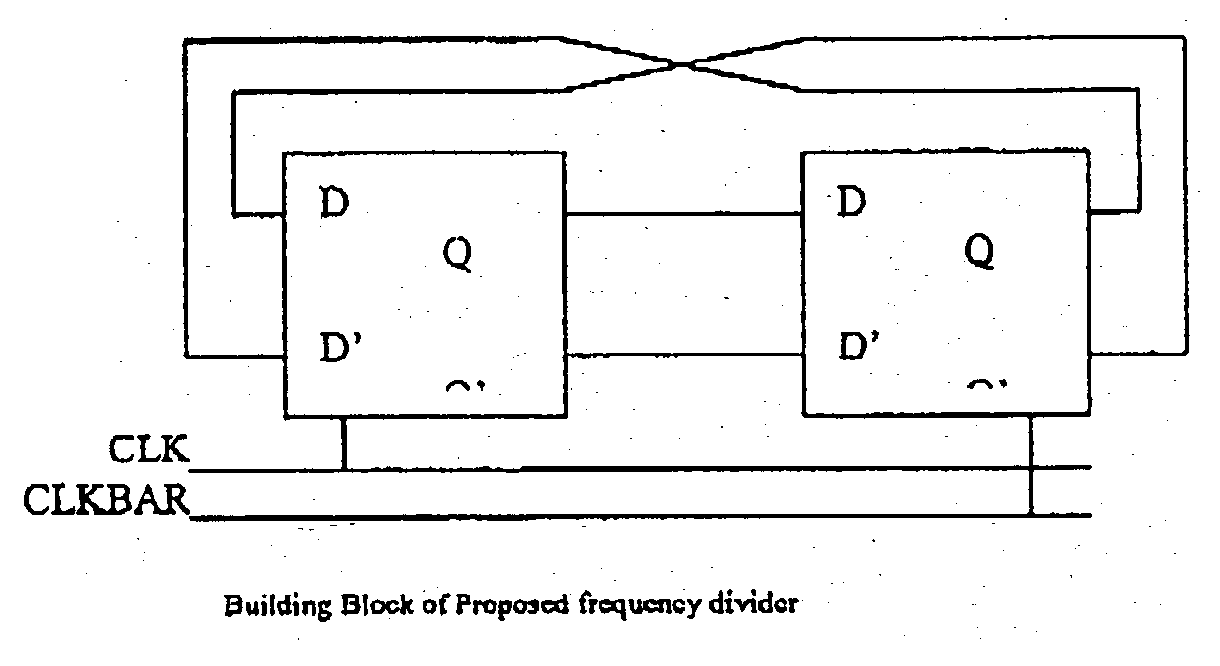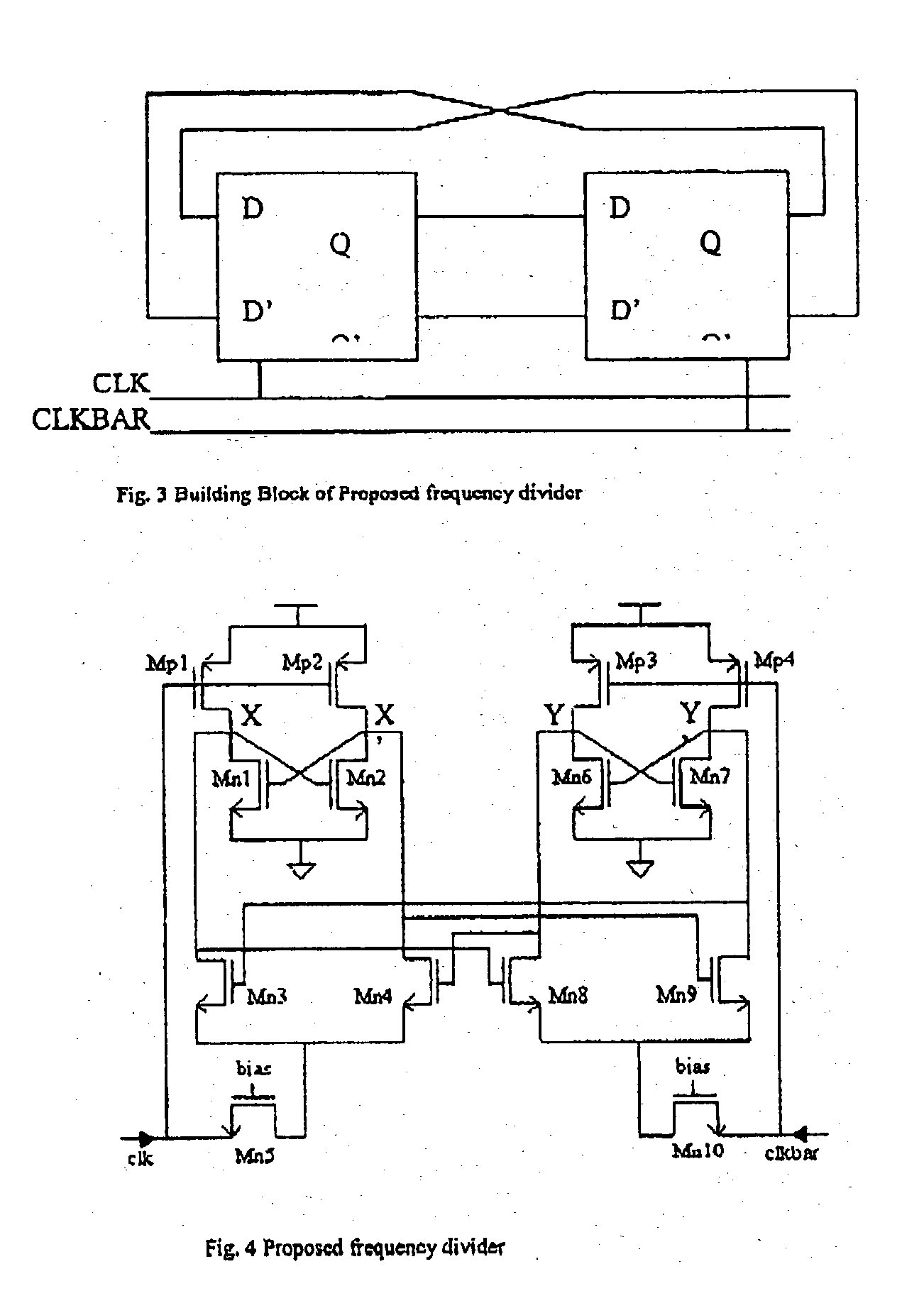Low-voltage high-speed frequency-divider circuit
- Summary
- Abstract
- Description
- Claims
- Application Information
AI Technical Summary
Problems solved by technology
Method used
Image
Examples
Embodiment Construction
[0013] FIG. 3 shows the building blocks of an embodiment of the present invention and its schematic is shown in FIG. 4. The proposed frequency divider consists of two identical D-flip-flops cross-coupled with each other. Each circuit section generates an output signal driving the other, in other words the outputs of the first D-flip-flop are connected to the inputs of the second D-flip-flop, and similarly the outputs of the second D-flip-flop are fed back to the first D-flip-flop inputs. Unlike conventional frequency divider designs that employ a pair of complementary input signals within each D-flip-flop section, each of the D-flip-flops in the circuit of FIG. 3 is driven with a single input signal only. In this embodiment of the present invention, the first D-flip-flop is driven by an input signal (CLK), while the second D-flip-flop is driven by an input signal (CLKBAR), which is the complementary counterpart of CLK. The function of the two identical D-flip-flops is in a cooperati...
PUM
 Login to View More
Login to View More Abstract
Description
Claims
Application Information
 Login to View More
Login to View More - R&D
- Intellectual Property
- Life Sciences
- Materials
- Tech Scout
- Unparalleled Data Quality
- Higher Quality Content
- 60% Fewer Hallucinations
Browse by: Latest US Patents, China's latest patents, Technical Efficacy Thesaurus, Application Domain, Technology Topic, Popular Technical Reports.
© 2025 PatSnap. All rights reserved.Legal|Privacy policy|Modern Slavery Act Transparency Statement|Sitemap|About US| Contact US: help@patsnap.com



